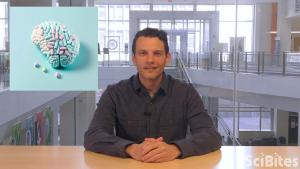Mapping Brain Highways to Stop Substance Use Disorders
Scientists have known for a long time that a part of the brain called the amygdala is involved in both feelings of fear and reward, which may explain why it also appears to play a role in substance use disorders that make it hard to stop using alcohol and other drugs. Aslaan Siddiqi, a postbaccalaureate research fellow in the Intramural Research Program at the National Institutes of Health, is studying how the amygdala might boost the sense of reward and minimize the perception of risk related to using those health-damaging substances. By doing so, he and his labmates hope to discover a way to correct the skewed balance between risk and reward that contributes to substance use disorders.
Click here to learn more about the research being done in Aslaan’s lab.
Interested in finding out for yourself what it’s like to do research at NIH? Check out our training opportunities to learn about the IRP’s programs for students, recent graduates, and postdoctoral fellows.
Still hungry for more SciBites? Watch more.
Categories:
Neuroscience Substance use disorder
Related Videos
This page was last updated on Monday, July 15, 2024




